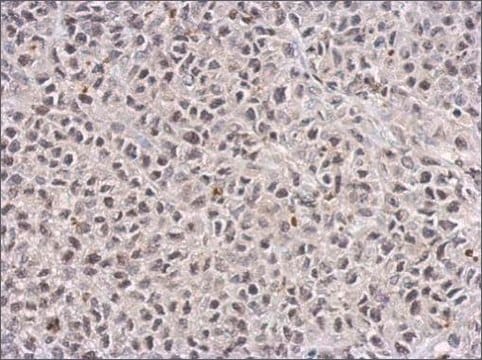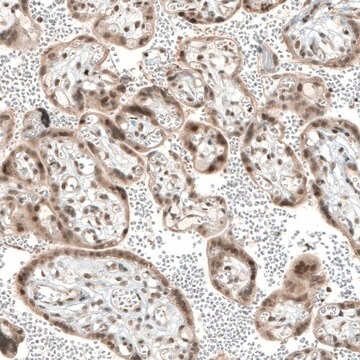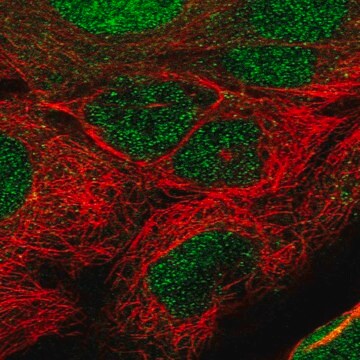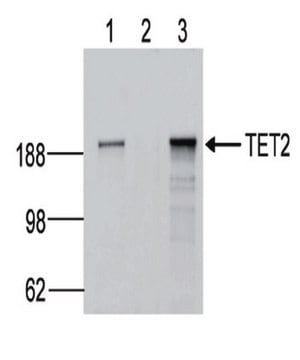MABE1144
Anti-TET1 Antibody, clone 5D6
clone 5D6, from rat
Sinonimo/i:
Methylcytosine dioxygenase TET1, CXXC-type zinc finger protein 6, Ten-eleven translocation 1 gene protein homolog
About This Item
Prodotti consigliati
Origine biologica
rat
Livello qualitativo
Forma dell’anticorpo
purified immunoglobulin
Tipo di anticorpo
primary antibodies
Clone
5D6, monoclonal
Reattività contro le specie
mouse
tecniche
ELISA: suitable
immunocytochemistry: suitable
immunoprecipitation (IP): suitable
western blot: suitable
Isotipo
IgG2aκ
N° accesso NCBI
N° accesso UniProt
modifica post-traduzionali bersaglio
unmodified
Informazioni sul gene
mouse ... Tet1(52463)
Descrizione generale
Specificità
Immunogeno
Applicazioni
Epigenetics & Nuclear Function
Chromatin Biology
Immunoprecipitation Analysis: A representative lot immunoprecipitated endogenous TET1 from murine embryonic stem cell (mESC) lysate. Subsequent LC-MS/MS analysis detected the presence of co-immunoprecipitated glycosyltransferase OGT (Bauer, C., et al. (2015). J. Biol. Chem. 290(8):4801-4812).
ELISA Anaylsis: Clone 5D6 hybridoma culture supernatant was confirmed for its immunoreactivity against His-tagged murine TET1 by ELISA (Bauer, C., et al. (2015). J. Biol. Chem. 290(8):4801-4812).
Qualità
Immunocytochemistry Analysis: A 1:200 dilution of this antibody detected TET1 in mouse embryonic stem cells (ESCs).
Descrizione del bersaglio
Linkage
Stato fisico
Stoccaggio e stabilità
Altre note
Esclusione di responsabilità
Not finding the right product?
Try our Motore di ricerca dei prodotti.
Codice della classe di stoccaggio
12 - Non Combustible Liquids
Classe di pericolosità dell'acqua (WGK)
WGK 1
Punto d’infiammabilità (°F)
Not applicable
Punto d’infiammabilità (°C)
Not applicable
Certificati d'analisi (COA)
Cerca il Certificati d'analisi (COA) digitando il numero di lotto/batch corrispondente. I numeri di lotto o di batch sono stampati sull'etichetta dei prodotti dopo la parola ‘Lotto’ o ‘Batch’.
Possiedi già questo prodotto?
I documenti relativi ai prodotti acquistati recentemente sono disponibili nell’Archivio dei documenti.
Il team dei nostri ricercatori vanta grande esperienza in tutte le aree della ricerca quali Life Science, scienza dei materiali, sintesi chimica, cromatografia, discipline analitiche, ecc..
Contatta l'Assistenza Tecnica.








